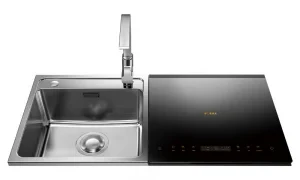Programmatic advertising first emerged in 1993, revolutionizing the ad-delivery process after its inception from a basic banner on Wired.com. This creative approach has now become commonplace for digital media purchases, encompassing various formats like online display ads, video ads, search ads, social media ads, and sophisticated TV and outdoor ads. Recent advancements suggest that programmatic audio advertising is poised to gain significant traction in the near future. Let’s delve into this emerging trend.
Understanding Programmatic Audio Advertising Programmatic audio advertising involves the automated buying and selling of ads within audio content such as podcasts, digital radio, and music streaming services. Leveraging algorithmic buying technology, this method streamlines ad selling and insertion, empowering advertisers to effectively reach their target audience with relevant audio ads.
Operational Mechanisms of Programmatic Audio Advertising This advertising method entails bidding, buying, and executing campaigns with a focus on audio content. Advertisers convey their message through audio ads seamlessly inserted into the content consumed by the audience, accessible across various devices including desktops, mobile devices, and smart speakers.
The Ascendancy of Audio Programmatic Advertising Several major players, including Spotify, SoundCloud, Tune In, Pandora, and Google, are either exploring or actively incorporating programmatic audio into their strategies, signaling a significant shift in the advertising landscape. This growing interest is propelled by broader changes within the advertising industry, including the continuous optimization of advertising processes and the increasing dominance of digital alternatives like streaming TV, music services, and digital radio.
Leading Companies Offering Programmatic Audio Advertising Numerous companies have embraced programmatic audio advertising, with Google announcing plans in 2018 to introduce programmatic audio ads on platforms like Spotify, SoundCloud, Tune In, and Google Play Music. Similarly, Rubicon Project expressed interest in programmatic audio, foreseeing its potential growth. SoundCloud and Pandora have also adapted to this evolving landscape by integrating programmatic audio and video inventory into their respective marketplaces.
Conclusion Programmatic audio advertising offers several advantages, including cross-device campaign integration, highly engaged audiences, precise targeting capabilities, frequency control, and data-driven decision intelligence. With its efficiency, dynamic creative messaging, real-time optimization, and comprehensive reporting and attribution capabilities, advertisers can effectively connect with their target market and achieve their marketing objectives.








































